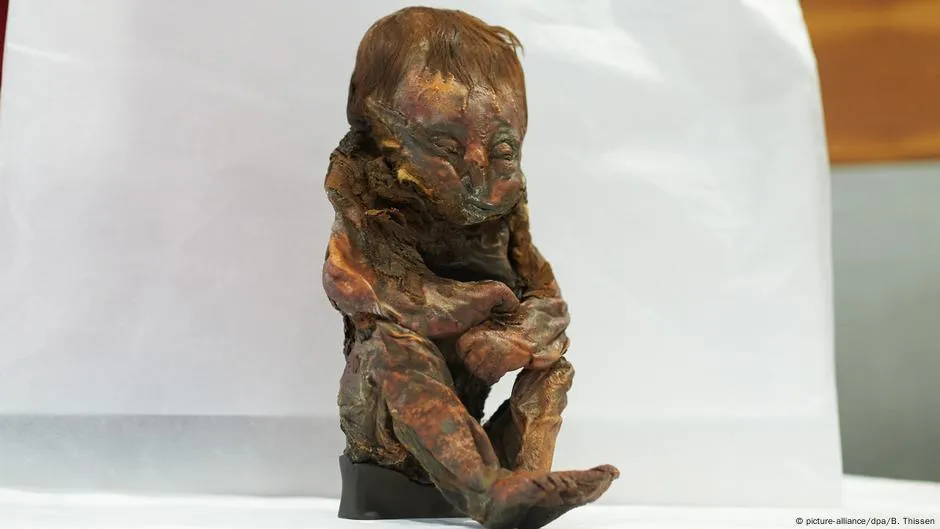In 1958, a remarkable discovery was made in the Acacus Mountains of southwestern Libya: a mummy dating back approximately 5,600 years.
This discovery sparked world interest, given that the history of the mummy predates by about 1500 years the time of mummification recorded in the ancient Egyptian civilization, dating back to (2250-2750) BC, leading scientists to reconsider the belief that prevailed that mummification on the African continent began in Egypt, and prompting a new hypothesis that its origin is probably one of the unknown earlier civilizations that arose in the area today known as Libya over a period of 20,000 years.
The mummy is called “Wan Moha Gaj” or Black Mummy. It was found by an Italian archaeological mission led by Fabrizio Mori in 1958 during excavations in a small rock cave located in the Chowente valley in the Acacus mountain range, south of the Libyan town of Ghat, near the border with Algeria.

This unique mummy, now kept at the Red Saraya Museum in the capital Tripoli, belongs to a small, dark-skinned boy, aged about two and a half. His body was carefully wrapped in the skin of an antelope, and he assumed the position of a foetus, his guts removed and he was wrapped in wild grasses to protect him from putrefaction and decay.
To everyone’s surprise, radioactive carbon-14 analysis at the time showed the mummy to be between 5,400 and 5,600 years old.
Carvings of crocodiles, giraffes, cows, goats, elephants, etc. were discovered approximately 30 meters from the place where the mummy was found, and the oven of the gods was found, which is a circular ring with a diameter of 3 meters surrounded by small stones and in the middle there is a fire place where they were throwing the animals into it and a few meters away they found an altar for these animals.

Drawings and inscriptions showing the civilization, religion and tribe of Wan Mohi Gaj were also discovered, including a man putting an animal head on his head. Scientists said that this man is the god of death and is similar to the pharaohs’ god of death in terms of mask, which means that the Libyan civilization preceded the pharaohs’ civilization by more than 2000 years (i.e. mummification did not start in Egypt, but rather in Libya, and the people (Wan Mohi Gaj) in particular were the first to do mummification. They then moved north and south and towards the Nile after a sudden change in climate occurred in the Libyan desert, then they headed towards the plains and water.
In 2008, a joint Libyan-British archaeological mission led by English scientist “David Ma Tangle” discovered a 2.25-meter-long mummy when the mission was conducting research and excavation work in (Ubari) Wadi Al-Hayat, on the slopes of Mount Zangkara, south of the town of Garma in the (Ubari) region.

This mummy is estimated to be seven thousand years old, and is placed in the burial site that the Libyans practiced to bury their dead, the strongest evidence that it was the ancient Libyans who discovered the mummification of the dead. The Libyans used plant leaves, such as palm leaves, to complete the mummification process, in addition to natron salt, such as the mummy of Wan Hohe Gage.
The mummy of a seven-year-old girl who died 1800 years ago was also found in Jaghbub. The first indication of a mummy in Jaghbub was written by Richard Goodchild (he was head of the Monitor of Antiquities of the Eastern Province between 1954 and 1967) in the book published after his death (Libyan Studies). And it tells of the history of the archaeological discovery, in which he spoke of the Italian Gasparo Oliverio (head of antiquities of the Eastern Region ca. 1921-1935)






